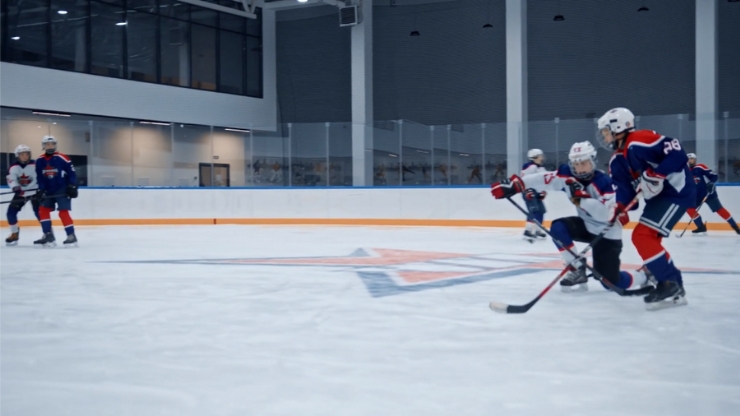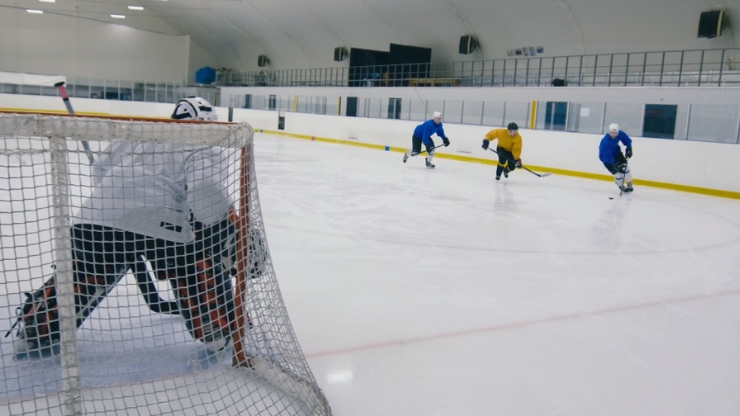Ice hockey is a sport known for its exhilarating speed, bone-crushing hits, and dramatic goals. The popularity of professional hockey has surged in recent years, captivating fans around the world with its fast-paced action and intense rivalries. As an avid hockey enthusiast, you might find yourself wondering about the structure of the game.
One burning question that often arises is: How many periods are there in professional games? In this blog post, we will delve into the intricacies of the game’s intervals, exploring their significance and shedding light on any variations that exist within different leagues.
Understanding the Basics of Periods
Before diving into the specifics of professional hockey, let’s start with the basics. In this sport, a period is a defined segment of gameplay, usually separated by intermissions. Each interval has a set duration during which the teams compete. In most cases, the standard duration of a hockey interval is 20 minutes, resulting in a total of three spells in a game.
The duration of each period is carefully regulated to ensure fair and balanced competition. It allows for a sufficient amount of gameplay while also accounting for factors such as player fatigue and the need for strategic adjustments during intermissions.
However, it’s worth noting that not all levels of the sport adhere to the same spell duration. For instance, in youth or recreational leagues, the intervals might be shorter to accommodate younger players or time constraints.
The Standard Count in Professional Hockey

When it comes to professional model, the standard number of periods remains consistent across the major leagues. Whether you’re watching the National Hockey League (NHL), the Kontinental Hockey League (KHL), or the Swedish Hockey League (SHL), you’ll find that they all follow the three-period structure.
The governing bodies and leagues are responsible for the regulation of professional hockey to ensure that this standard is upheld. The International Ice Hockey Federation (IIHF) plays a crucial role in setting the rules and regulations for international competitions, including the Olympic Games.
Furthermore, professional leagues like the NHL in North America and the KHL in Europe strictly adhere to the three-interval format.
Variations and Exceptions in Professional Sports

While the standard spell count of three is prevalent in most professional leagues, there are exceptions and variations that add a touch of diversity to the game. Some leagues have experimented with modifications to the period count for various reasons.
One notable example is the American Hockey League (AHL), which serves as the primary developmental league for the NHL. Until the 2020-2021 season, the AHL implemented a rule that included an additional spell of play called the “overtime period.”
If the game remained tied after the regulation three intervals, a sudden-death overtime period would follow. The team that scored the first goal in this extra spell would be declared the winner.
Additionally, certain international tournaments, such as the IIHF World Championships, have utilized different counts. In these competitions, particularly during the preliminary rounds, games may consist of three periods of 20 minutes each, followed by an overtime spell and a shootout if necessary.
Historical Perspective on Period Counts

To truly grasp the significance of the standard period count in professional sports, it’s essential to explore its historical evolution. In the early days of the sport, the number of periods varied widely.
For instance, during the late 19th and early 20th centuries, games could feature two halves, two or three spells, or even two 30-minute halves. However, as the sport progressed and established governing bodies began to regulate the rules, a consensus gradually emerged.
The adoption of the three-period structure became more widespread, offering a balance between gameplay, rest intervals, and strategic adjustments. Over time, refinements were made to enhance the flow and fairness of the game.
For instance, the introduction of intermissions between spells allowed players to rest and receive instructions from their coaches. The standardization of period counts across professional leagues contributed to the development of a cohesive and globally recognized sport.
Game Periods in the Olympics

In Olympic hockey games, the number of periods adheres to the standard format followed in international ice hockey competitions. Typically, Olympic hockey games consist of three intervals. Each period lasts for 20 minutes of gameplay, making it a total of 60 minutes for regular play.
These periods are divided by two intermissions, providing players with a chance to rest, strategize, and regroup for the upcoming intervals.
The decision to have three periods in Olympic hockey games aligns with the international standard set by the International Ice Hockey Federation (IIHF). This standardization ensures consistency and uniformity across international competitions, including the prestigious Olympic Games. The three-period structure allows for a balanced and fair playing field for all participating teams.
This format in Olympic games contributes to the overall excitement and competitiveness of the sport. It allows for fluctuations in momentum, potential comebacks, and dramatic moments that keep fans on the edge of their seats.
The structure also emphasizes the importance of endurance, teamwork, and adaptability as teams navigate through each period. While the standard number of periods in Olympic games remains consistent, it’s worth noting that overtime spells may be added in the event of a tie during the knockout stages or medal matches.
Overtime spells usually consist of sudden-death play, where the first team to score wins the game. These additional periods aim to determine a clear winner and add an extra layer of suspense to the high-stakes Olympic competitions.
Olympic games feature the standard three-period format, following the international guidelines set by the IIHF. This structure ensures fairness, strategic opportunities, and thrilling gameplay for both players and spectators. Whether it’s the intensity of regulation play or the nail-biting suspense of overtime, Olympic hockey showcases the very best of the sport on the world stage.
Impact of Period Counts on Gameplay and Strategy

The number of intervals in a game has a profound impact on the gameplay and strategic decisions made by teams. With three periods, coaches have multiple opportunities to analyze the opponent’s tactics and adjust their game plan accordingly.
They can make necessary line changes, address areas of weakness, and motivate their players during the intermissions. The intermissions between spells not only allow for rest but also provide valuable time for teams to regroup and recharge.
Players can rehydrate, refocus, and receive medical attention if needed. These short breaks enable them to maintain a high level of performance throughout the game.
Furthermore, the three-period structure encourages teams to pace themselves effectively. They must allocate their energy and effort over the course of the game, understanding that there are multiple opportunities to seize the momentum and turn the tide in their favor.
In addition to understanding the number of periods in professional hockey games, it’s fascinating to explore the jaw-dropping salaries earned by the NHL’s top 10 players.
Conclusion
In conclusion, understanding the number of intervals in professional sports is essential for any enthusiast of any given sport. The standard count of three periods provides a framework that enables fair and strategic gameplay while allowing for rest and adjustments between spells.
Although there are variations and exceptions within certain leagues or tournaments, the three-period structure remains the cornerstone of professional hockey. As you continue to explore the world of hockey, consider diving deeper into related topics such as rule variations, scoring systems, or the influence of intervals on player statistics.
By delving into these intricacies, you will develop a richer appreciation for the game and become an even more passionate fan.
Closing

We hope this blog post has shed light on the intriguing question of how many periods professional hockey games have. If you found this information valuable, we encourage you to share it on social media or engage in the comments section below.
Additionally, if you’re hungry for more hockey-related knowledge, be sure to check out our other blog posts or explore the wide range of resources available on the sport.
Thank you for joining us on this exploration of the fascinating world of professional hockey. Lace up your skates, grab your stick, and let the puck drop as you continue your journey into the heart-pounding excitement of this beloved sport!

